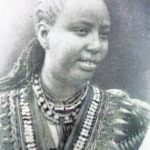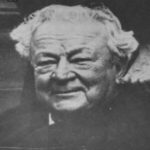NA ATABIA
- 3 Min Read
Na Atabia (16? -1741) was the 17th Nayiri (paramount chief) of Mamprusi, in what is now northeastern Ghana, who reigned for more than half a century (1688-1741), and was responsible for the phenomenal expansion of that kingdom.
At the beginning of his reign, Mamprusi (called Mamprugu in the local language) was a fairly small kingdom, located between the Gambaga scarp and the Nasia River, a tributary of the White Volta, about 30mi (48km) to the southeast of the scarp. But as a result of a series of military expeditions which took the Mamprusi through the territories of Kusasi to the north, Nankasi and Builsa to the northwest. Leo, in what is now Upper Volta, and Bouna (Buna) to the south, in what is now the northeast Ivory Coast. Na Atabia brought nearly the whole of what is now northern Ghana – excluding the states of Dagomba, Gonja, and Wa – under his rule.
In the course of his campaigns in the neighbourhood of Bondoukou (Bontuku) in what is now the Ivory Coast, he invited the Chakosi (Anufom) to assist him in a war against the Grumah chiefdom of Kantindi. The Chakosi, who were mercenaries of Akan and Mende origin, arrived in Mamprusi in about 1731. After a successful attack on Kantindi, the Chakosi settled at Kunjogo, in what is now northern Togo, which became known by its Hausa name of Sansanne-Mango.
Na Atabia’s reign coincided with the growth of trade on the northeastern trade route which linked the Volta basin with the Hausa trading centres, such as Kano and Katsina in what is now northern Nigeria. But traders passing through that part of the route which lay between Tenkudugu (Tenkodogo) in Upper Volta, and the Mamprusi capital of Gambaga, were often attacked and robbed. To protect them against brigandage, Na Atabia established the chiefdoms of Binduri and Sinibaga, as well as Bawku, in what is now the extreme northeast of Ghana.
The increased security that Hausa traders enjoyed during Na Atabia’s reign led to the growth of a Muslim community at Gambaga. On the advice of one Mangoshi, Na Atabia appointed Mahmud, a learned Hausa Muslim, as the imam (religious leader of the Islamic community) there. When in about 1700 Na Atabia transferred his court from Gambaga to Nalerigu, 7mi (11km) to the east, he placed the imam and ten ‘dana (priest-chief) in charge of Gambaga. This was the first step which led to the subsequent incorporation of the Muslim estate into the socio-political system of Mamprusi.
A. A. ILIASU




